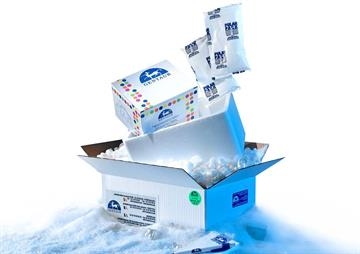Cas9 Expressing Immortalized Human Skeletal Muscle Cell Line

Cas9 Expressing Immortalized Human Skeletal Muscle Cell Line
6041 €
In Stock
quantity
product details
Catalog number: 10021 - T3450
Product Category: Business & Industrial > Science & Laboratory
ABMGentaur
Size: 1x10^6 cells / 1.0 ml
Related Products
ABC-TC3797
Human Skeletal Muscle Cells
Skeletal muscle cells are one of the largest cells in the body. They are multinucleate formed by the fusion of myoblasts. Skeletal muscle regeneration is a complex process in which many factors are involved. When skeletal muscle suffers an injury, quiescent resident myoblasts called satellite cells are activated to proliferate, migrate, and finally differentiate. Various cellular signaling pathways, such as phosphatidylinositol 3-kinase, calcineurin, Janus kinase 2/signal transducer and activator of transcription 3 (STAT3), and mitogen-activated protein kinase (MAPK) have been suggested to play an important role in skeletal muscle growth. RI-stimulated glucose transport in cultured human skeletal muscle is mediated by GLUT4 and heparan sulfate proteoglycan is involved in skeletal muscle differentiation. The fusion of mononucleated cells to form multinucleated myotubes is a central event in skeletal muscle development. Controlling the onset and progression of this process is a complex set of interactions between myoblasts and their environment. Skeletal muscle cell culture is a useful model for studying this process of cell differentiation.HSkMC from Gentaur Research Laboratories are isolated from human muscle of the pectoral girdle. HSkMC are cryopreserved at primary culture and delivered frozen. Each vial contains 5×10^5 cells in 1 ml volume. HSkMC are characterized by immunofluorescent method with antibodies to myosin, actin and actinin. HSkMC are negative for HIV-1, HBV, HCV, mycoplasma, bacteria, yeast and fungi. HSkMC are guaranteed to further expand for 15 population doublings at the conditions provided by Gentaur Research Laboratories.
Ask for quotation
ABC-TC3802
Human Skeletal Muscle Myoblasts
Skeletal muscle regenerates by the proliferation of mononuclear myogenic precursor cells called myoblasts that ultimately fuse and become incorporated into multinucleated myotubes, which later mature into myofibres. This process occurs during the embryonic histogenesis of muscle and in postnatal muscle regenerating in response to injury, or in myopathies such as Duchenne muscular dystrophy. The fusion of myoblasts is specific to skeletal muscel. Myoblasts that do not form muscle fibers differentiate into satellite cells. Skeletal muscel myoblasts express FGF receptor and IGF expression is increased during myoblast differentiation in culture. The human skeletal muscle myoblast culture is a convenient in vitro model for the study of cellular development and differentiation, RI matablism and tissue repair.HSkMM from Gentaur Research Laboratories are isolated from human muscle of the pectoral girdle. HSkMM are cryopreserved on primary culture or passage one and delivered frozen. Each vial contains 5×10^5 cells in 1 ml volume. HSkMM are characterized by immunofluorescent method with antibodies to myosin, actin and actinin. HSkMM are negative for HIV-1, HBV, HCV, mycoplasma, bacteria, yeast and fungi. HSkMM are guaranteed to further expand for 15 population doublings at the conditions provided by Gentaur Research Laboratories.
Ask for quotation
ABI-TC041D
Immortalized Rat Suprachiasmatic Nucleus Cell Line
Immortalised Rat Suprachiasmatic Nucleus Cells (SCN2.2) that are pluripotent and have the appearance of both neuronal and glial morphologies in culture.Suprachiasmatic nucleus or nuclei (SCN) is a tiny region of the brain in the hypothalamus, situated directly above the optic chiasm. It is responsible for controlling circadian rhythms. Pathologies and environmental disturbances in the regulation of circadian rhythms have been linked to variety of human health disorders including obesity and diabetes, increased cancer risk, cardiovascular disease, sleep-wake cycle disturbances, and depression.









